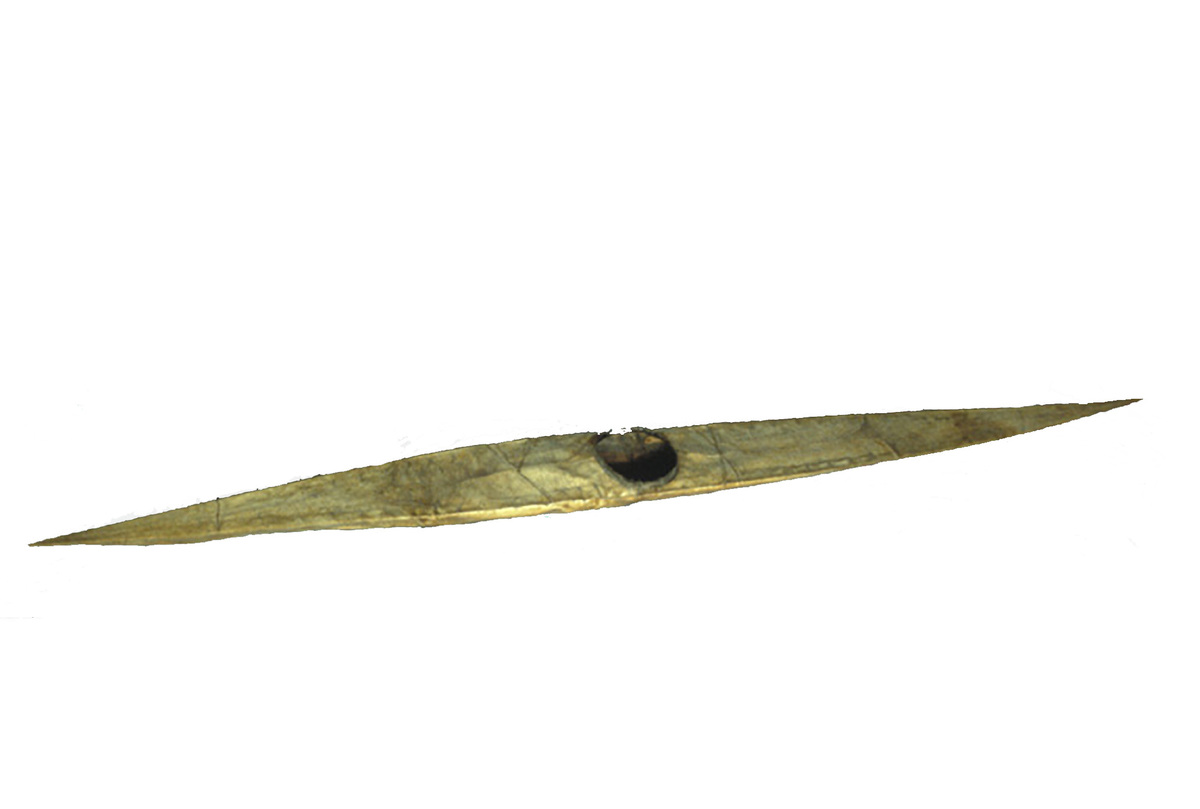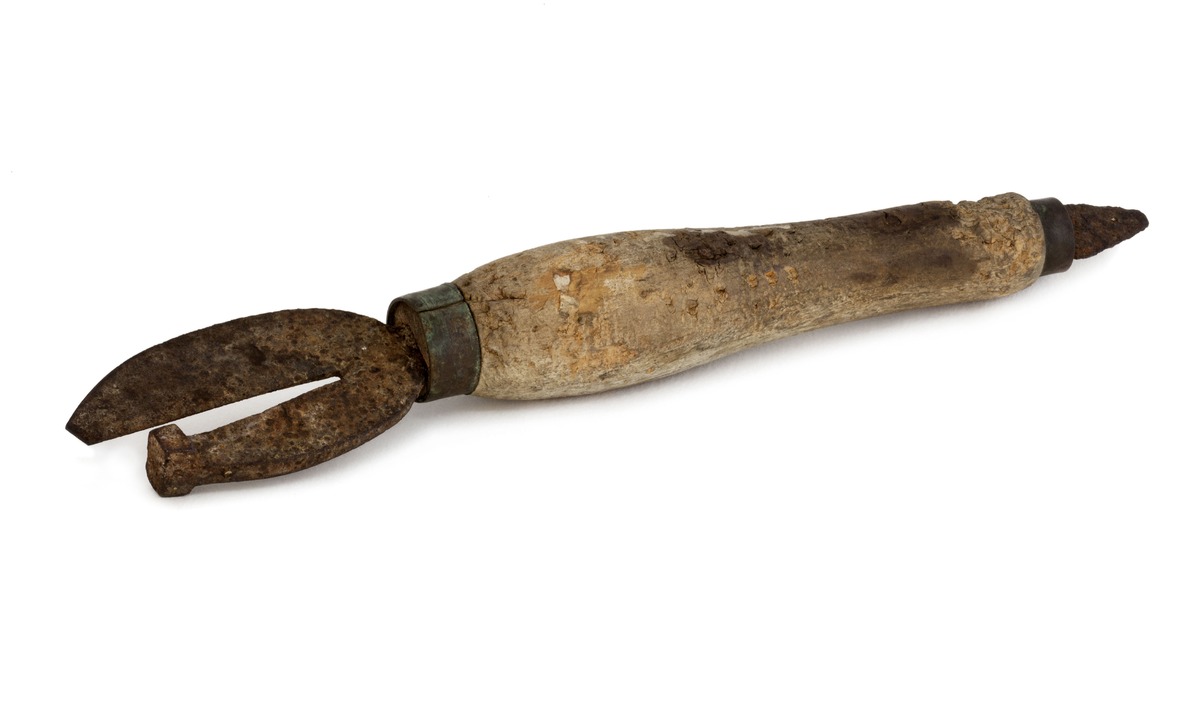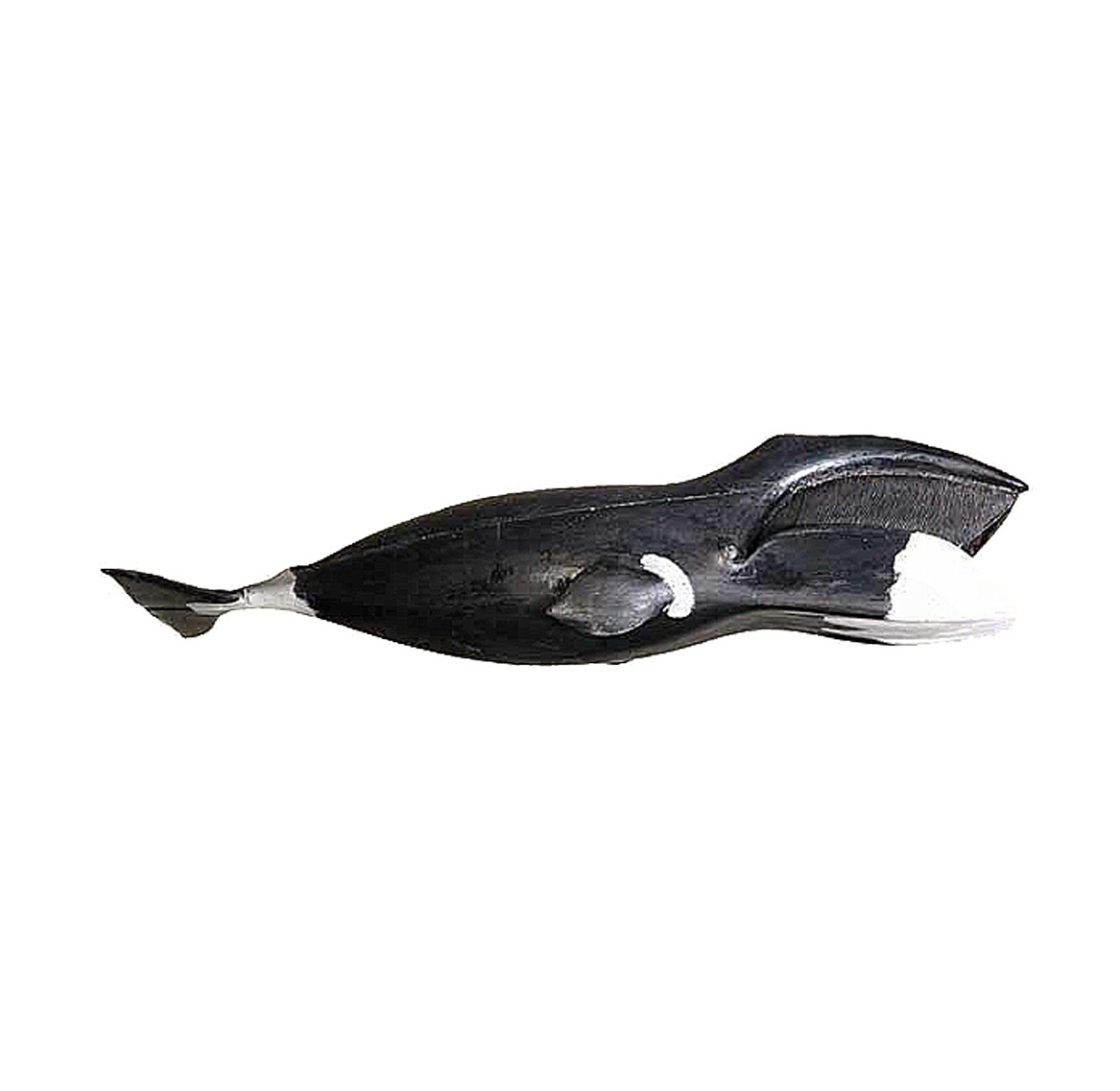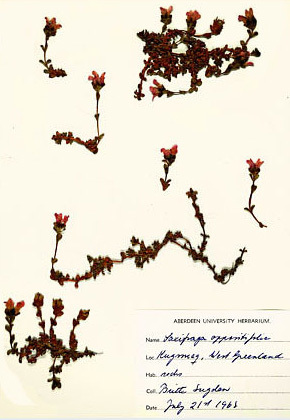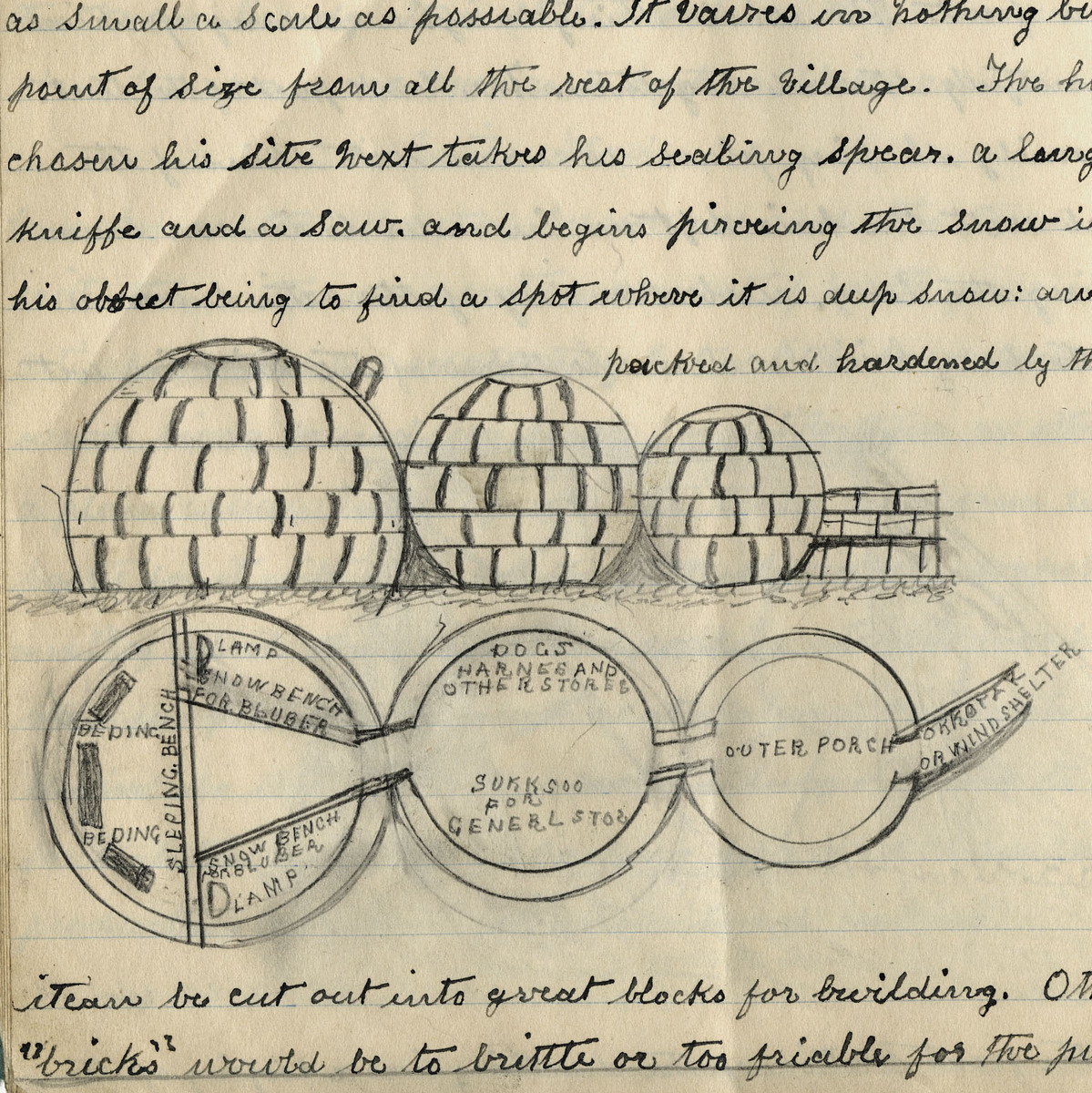Arctic Connections
The Arctic region is a hostile environment, where animals, plants and people have adapted in various ways in order to survive.
The collections held by the University reflect this: they give an insight into the lives of the indigenous peoples of the Arctic, detail the conditions faced by explorers and fishermen, and provide examples of the highly adapted flora and fauna which lives there.
Inuit Qajaq (Kayak), Belhelvie, Aberdeenshire
The University of Aberdeen collections have over one hundred Inuit objects, coming from many different collectors. These range from arrowheads to toys, furs and carvings. This kayak was found off the coast at Belhelvie, Aberdeenshire c. 1720 with an Inuit man aboard. He died shortly afterwards.
Tin Opener
The British Arctic Expedition of 1875-76 consisted of two ships, the Discovery and Alert, and aimed to reach the North Pole. A tin opener and Inuit knife which belonged to crew of the Discovery and a tea cup from the Alert are held by the Museums.
Model of Bowhead Whale by Capt Gray
Captain David Gray (1825-1896), whaler and arctic naturalist, was commissioned by the British Museum to bring back a Bowhead Whale skeleton for study. This proved too difficult to transport, and Gray produced scale models instead, one of which is in the Zoology Museum. The Zoology Museum also contains specimens brought back from research trips to the Arctic. These include study skins and fluid specimens from Professor VC Wynne-Edwards’ expeditions to Baffin Island, five polar bear skulls, and a Ross’s Gull egg.
Saxifraga Oppositifoila
This Saxifraga oppositifoila was collected in West Greenland in 1968.
Arctic material in the Herbarium principally comes from student research in Greenland, but there are also specimens from Arctic Institute expeditions, expeditions to Spitzbergen, and VC Wynne- Edwards’ trips to northern Canada (1932-45). There is a group of specimens collected on Spitzbergen by James Marr on the 1925 British Arctic Expedition to Franz Josef Land. Marr, an Aberdeen graduate, had been with Shackleton on his final expedition to the Antarctic only a few years before.
These Halysites from the Silurian period are part of the Museums' vast geological collections.
Sixteen rocks dating from the Silurian period give an insight into past environments in the high North. Trapped inside them are Halysites, extinct corals which would have once grown in Arctic waters but can now only be found trapped in marine rocks.
Inuit with their tupiqs (summer tents) ('Esquimaux and their toupiks')
MS 2407 Arctic Series Through the Stereoscope
Journals such as those by George Kerr (1791) and David Hawthorn (1866-1891) provide details of conditions aboard whaling ships in Arctic waters. Dr Walker, aboard the Fox on a relief trip for the ill-fated 1857-1859 Franklin expedition, collected 52 plant specimens which he bound in a manuscript volume that is now held in the University. There also are a small selection of photographs which include images of Inuit, whaling, shipping, and birdlife.
Instructions for building an iglu (igloo) ('Building a ingloo for Winter')


